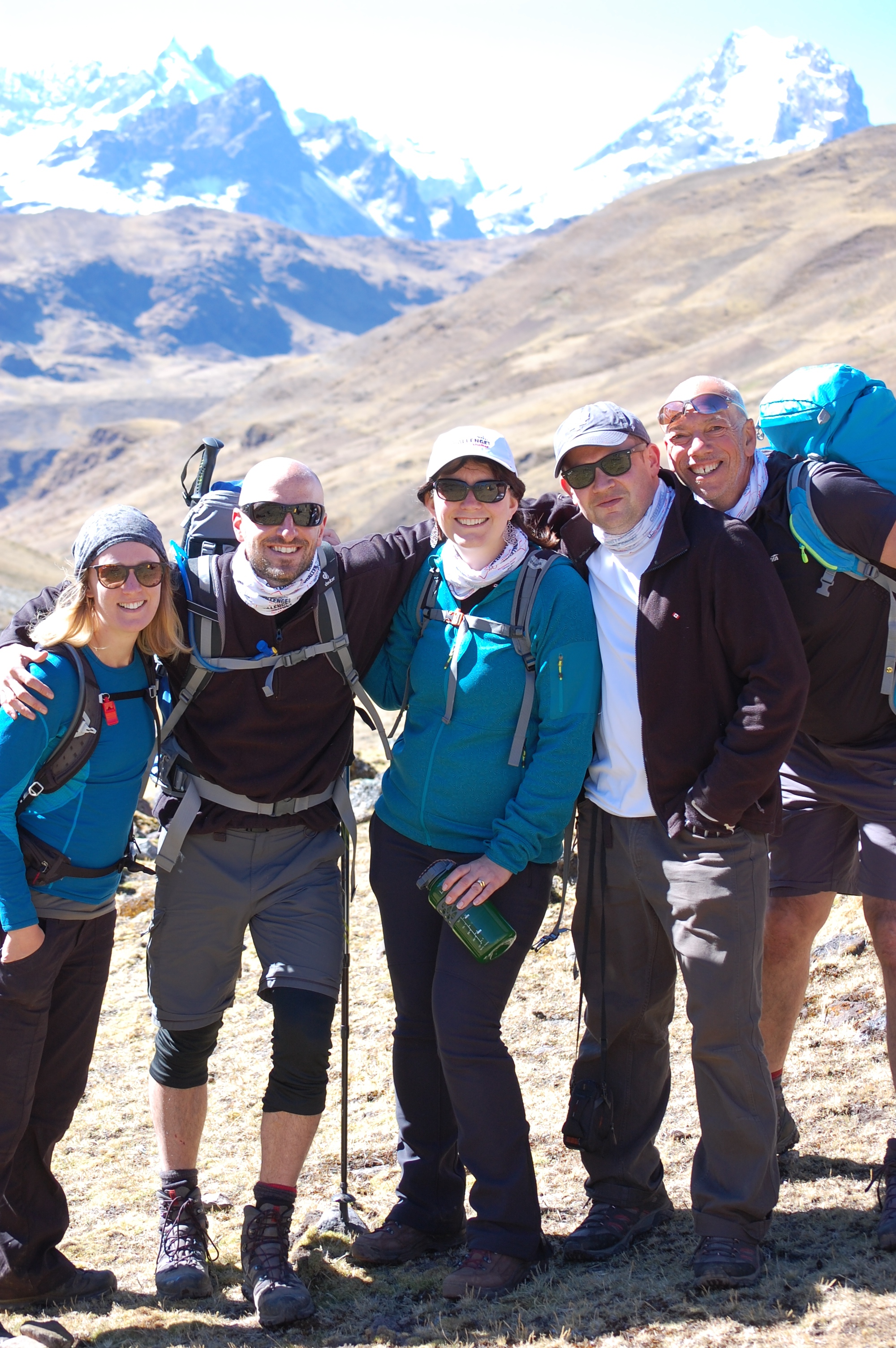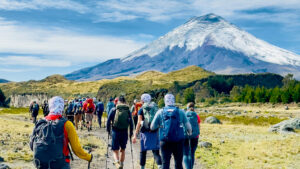By Shanan Spencer-Brown Executive Director, Royal LePage Shelter Foundation
It’s difficult to put into words how the Machu Picchu Challenge for Shelter affected me and my fellow “trekkers.” While we were prepared to hike long distances and to expect the uncertainty of the high elevation and resulting lack of oxygen, I don’t think many of us anticipated just how physically and emotionally demanding the experience would be. Or, how much we would learn about ourselves and each other along the way.
When the Royal LePage Shelter Foundation first introduced this unique fundraising initiative more than a year ago, the response was immediate and overwhelming. Dozens of Royal LePagers from across Canada stepped up to the plate, taking on the Challenge of raising $5,000 each for our company charity in support of local shelters, along with preparing for the physical demands of hiking long days at high altitude. Of the 60 individuals who took part, many raised much more than the minimum required. Our top individual fundraiser, Loretta Phinney from Mississauga, raised over $40,000, and our top team fundraisers, David Halls and his wife Robin-Lee Norris from Guelph, raised more than $35,000. Many others set a goal of raising double the minimum amount, proudly reaching $10,000 or more before we departed for Peru. As of September 9, we have raised almost $484,000 and donations are still coming in!
After traveling via Lima and spending two days in the town of Cusco to acclimate to the elevation, the three groups of trekkers set out (one day apart) for the long hike to reach Machu Picchu. There was excitement and more than a little trepidation as my group boarded a bus at 6:30 a.m. to take us to the start of our journey through the remote Lares Valley region.
Most of us were surprised by how truly challenging the trek was. The high altitude resulting in limited oxygen left us breathless at even the slowest pace, and many awakened from sleep at night gasping for air. Some suffered with varying degrees of headaches and nausea. The dehydration and extreme cold we faced while hiking and camping in the Andes Mountains meant we needed to cover ourselves in multiple layers of clothing, even sleeping in down jackets and fleece hats. Despite the layers of warm clothing and a sleeping bag suited to minus 10 degrees, I shivered in my tent at night, my teeth chattering so loudly I couldn’t fall asleep even though I was bone tired from the day’s exercise. The lack of basic comforts like indoor plumbing and safe water meant we went for days without showering and the “facilities” often took the form of a large rock or wall to hide behind! Many of us required the help of our group doctor, who traveled with us to provide oxygen, medications and first aid. And I certainly won’t miss those 4:30 am wake up calls. Being out of our comfort zone, we learned quickly to rely on our amazing guides, porters, cook and our trusty doctor to ensure we could stay the course.
While hiking the mountains that formed the Lares Valley – and, believe me, it felt like there was way more “mountain” than “valley” along this route – we encountered local Andean women and children who would run up and down the mountains to greet us. They spread out their wares of brightly-coloured handwoven scarves, hats, gloves and blankets, made from the wool of the alpaca herd they tended (alpaca wool is considered to be one of the warmest fabrics in the world). We also hiked alongside many grazing (and curious!) alpaca, llama and the occasional horse, including the “ambulance” horses that accompanied us through the mountains, where no cars would be able to get to us in the event of an emergency.

Pictured from left: Yuri, local guide, Evelyn, trek doctor, Rob Gardhouse (partially hidden), Dwayne Hayes, Lorraine Buck Forget, Anna Russell and Paul Kusnierczyk
Our trekkers brought school supplies, stickers, Canadian flag pins, and other small trinkets to share with the children we met along the way. At one remote mountain village where we set up camp, more than 50 local children were invited to join us as we attempted to evenly distribute these gifts in an orderly fashion. While we were not able to communicate directly with these children – who spoke the local language, Quechuan – the smiles on their faces spoke volumes.
Throughout all of this, the three groups of Machu Picchu trekkers remained resolute: our collective goal was to make it to the Sun Gate, our entry point to Machu Picchu. We climbed hundreds of rocky, uneven steps on the last leg of the famed Inca Trail. With the hot sun beating down on us, the tropical bugs biting at our ankles, the steep cliffs a mere inches from our path and with no barriers to prevent a fall, it required all of our attention and focus to get to our destination. Each step brought new discoveries of beautiful vegetation and waterfalls, along with views of the lush mountains all around us and the amazing Incan ruins consisting of landscaped terraces and immense stone structures.
When we finally made it to the Sun Gate (a stone structure that was once the main entrance to the ancient city), we were rewarded with an immensely moving view of Machu Picchu in front of us. There were tears of joy and exhaustion along with laughter, hugs and “high fives” as we celebrated our accomplishment. Several trekkers in each of the three groups went on to climb the demanding Machu Picchu Mountain, a punishing climb with stunning 360 degree views from the top, while others were more than happy to spend extra time exploring the archaeological ruins of this 15th century Inca city.
Along with the beauty of the landscape and the awe-inspiring scenes of Machu Picchu itself, spending time with my fellow trekkers was truly special. We came together as strangers, we left as family. The power of supporting one another through the more difficult moments and celebrating our collective achievements is what made this experience so unique. The laughter and the tears, the sore muscles and the shared jokes – these are the things I will remember forever.
The concept of “Challenge” ended up being more personal that I had originally thought when we set out to create the Machu Picchu Challenge for Shelter. It was about raising a lot of money for our cause, yes, but it was also about challenging us to do things that were uncomfortable, dealing with adversity, finding and pushing our limits, and reaping the rewards of our hard work. It was also about gratitude – being thankful for the support we received from one another during the trek, and even more so, for what we had waiting for us when we returned home.

The author takes a moment to enjoy the spectacular view
While several of us came back with coughs and colds and others suffered nasty bouts of intestinal distress during the trip, I think I can safely say that none of us would have traded the experience for anything.
I want to end by expressing my deepest gratitude and appreciation to all the Machu Picchu Challenge for Shelter participants. Through your efforts and the support of your donors, you raised close to half a million dollars to help bring hope and safety to abused women and children in your communities. On behalf of my Shelter Foundation colleagues, Sharon and Carly, it was an honour to trek alongside all of you and to be part of this journey that took us all to new heights.
To view videos from this trip of a lifetime, check out our YouTube channel.
To see photos of our amazing adventure, view our collection on Flickr.
If you’d like to make a donation in honour of a trekker, please click here.




